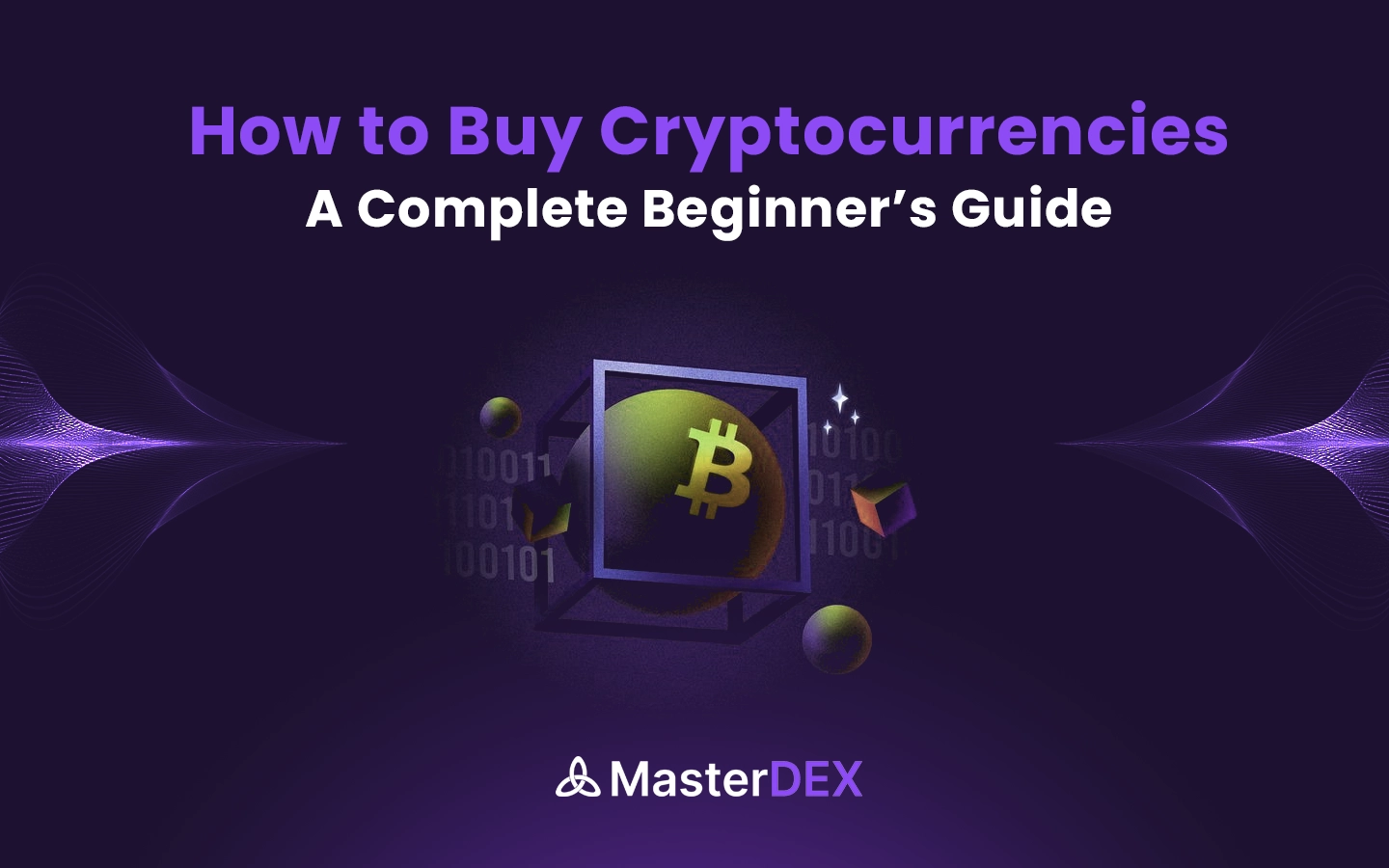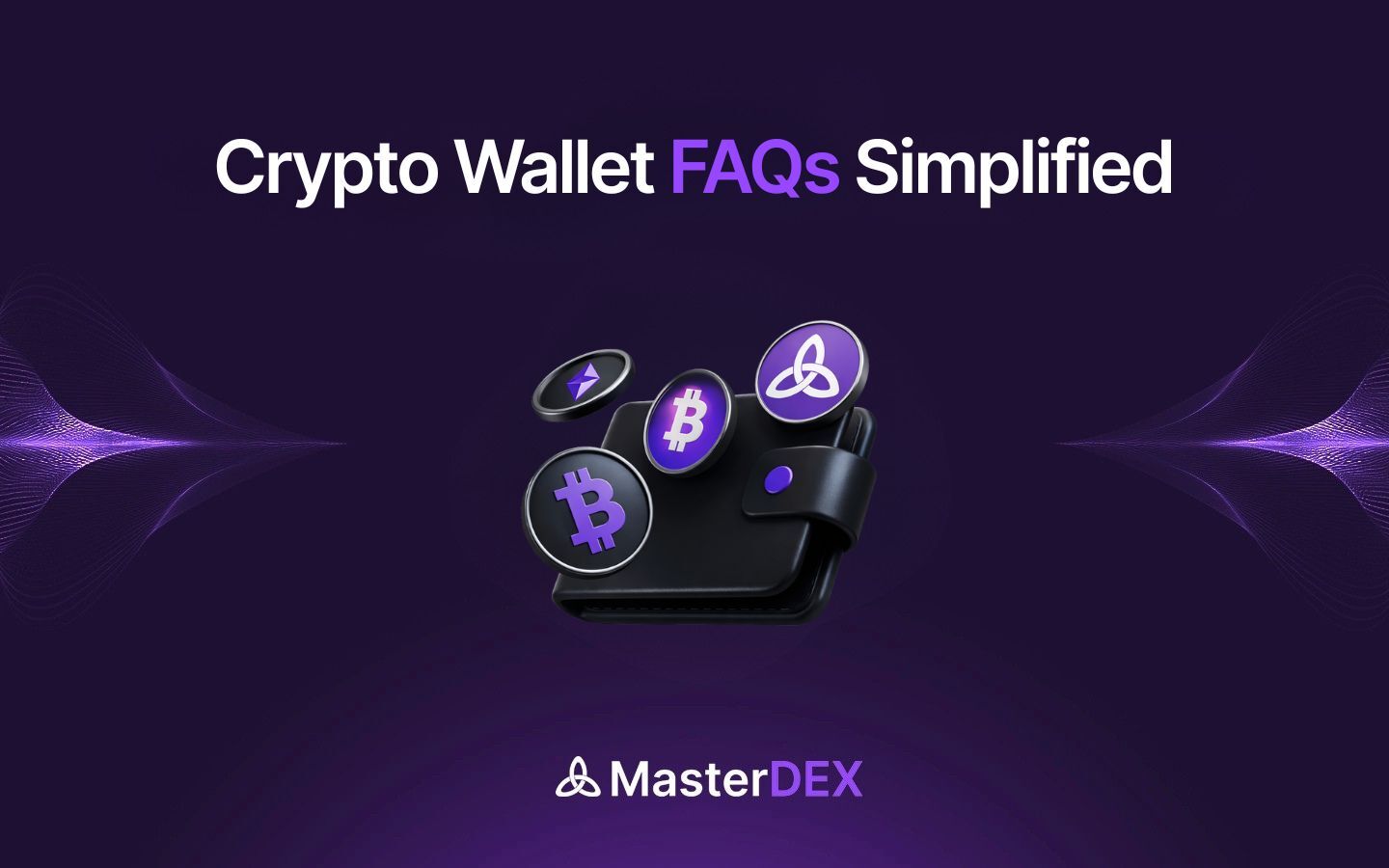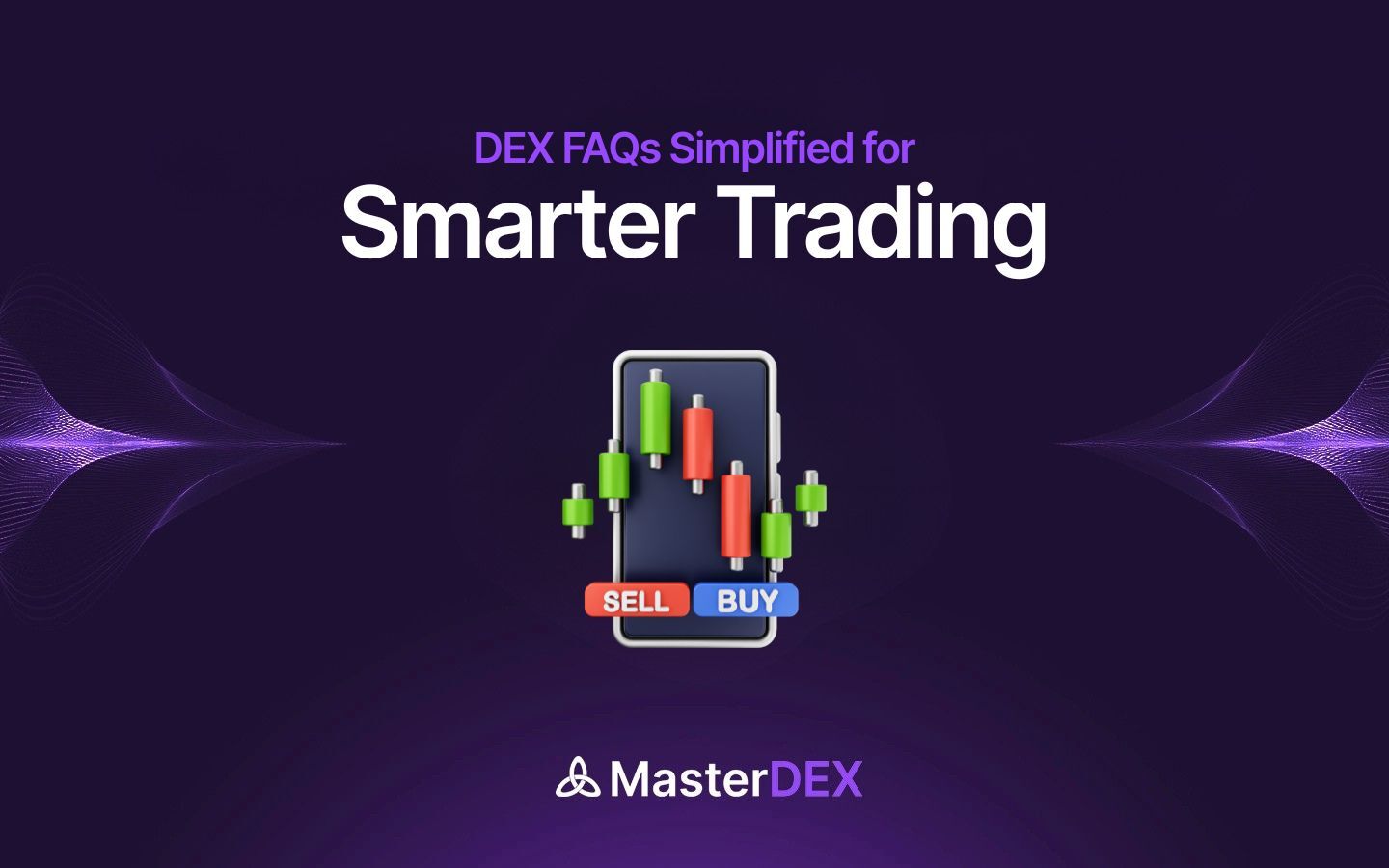Cryptocurrencies have come a long way from being an internet curiosity to becoming a cornerstone of the global digital economy. Since the introduction of Bitcoin in 2009, the cryptocurrency market has seen explosive growth, both in terms of value and adoption. Today, the conversation around crypto has expanded far beyond Bitcoin to encompass thousands of digital assets, decentralized finance (DeFi), non-fungible tokens (NFTs), and the broader Web3 ecosystem.
Table of Contents:
ToggleThe Numbers Tell the Story
According to data from Statista and TripleA (a global crypto adoption tracker):
-
- As of 2024, more than 580 million people worldwide own some form of cryptocurrency, a sharp rise from under 300 million in 2021.
-
- The global cryptocurrency market is expected to reach $64 billion in transaction volume by the end of 2025.
-
- Emerging markets like Nigeria, Vietnam, the Philippines, and Turkey are leading in retail adoption, showcasing crypto’s value as an alternative to unstable fiat systems.
-
- Bitcoin alone holds a market capitalization of over $1 trillion, often surpassing the valuation of leading tech giants.
Moreover, institutional adoption has accelerated. Major investment firms such as BlackRock and Fidelity have launched Bitcoin-related investment products, while companies like Tesla, PayPal, and MicroStrategy have either accepted or added crypto to their balance sheets.
Mainstream Momentum
In addition to this, regulatory recognition has also begun to take shape. The EU’s MiCA (Markets in Crypto-Assets) regulation is now in motion, and countries like the UAE, Singapore, and Switzerland are creating crypto-friendly frameworks that allow innovation to flourish under regulatory clarity.
From a technological standpoint, blockchain is enabling permissionless innovations such as decentralized apps (dApps), decentralized exchanges (DEXs), and cross-border payment systems are all becoming more accessible and relevant.
Why Buy Cryptocurrencies?
For many individuals venturing into the world of digital finance, the question arises: Why should one consider buying cryptocurrencies in the first place? The answer is rooted in a blend of financial opportunity, technological progress, and the pursuit of greater control over one’s assets. Cryptocurrencies have evolved far beyond the realm of speculative trading; today, they offer tangible use cases, serve as tools for empowerment, and function as gateways to a new digital economy.
Investment Opportunity with High Growth Potential
Cryptocurrencies first captured global attention due to their potential for extraordinary returns. Bitcoin, for instance, grew from being virtually worthless to reaching valuations in the tens of thousands of dollars within a decade. Ethereum followed with similar momentum, becoming a foundation for smart contracts and decentralized applications. This dramatic price appreciation has drawn investors from all corners of the globe, eager to gain exposure to what many see as the next evolution of finance. Unlike traditional markets, the crypto sector operates around the clock, allowing both short-term traders and long-term holders to engage with a highly dynamic and often lucrative environment.
An Alternative to Inflation-Prone Currencies
In many parts of the world, cryptocurrencies are more than just speculative assets; they are lifelines. Citizens in countries facing runaway inflation or currency devaluation have turned to digital assets as a means of preserving wealth. Bitcoin, with its fixed supply capped at 21 million coins, is particularly attractive in this context. Its scarcity mimics that of gold, positioning it as a modern store of value in contrast to fiat currencies that can be printed without limit. In nations like Argentina, Nigeria, and Venezuela, people increasingly convert their earnings into crypto to shield themselves from financial instability.
Empowerment Through Financial Sovereignty
One of the most revolutionary aspects of cryptocurrency is its ability to return financial control to individuals. Traditional banking systems often impose barriers such as high fees, account restrictions, and limited access. Cryptocurrencies bypass these constraints. With just a smartphone and an internet connection, anyone can create a wallet, receive funds, and make transactions on a global scale. This level of autonomy is particularly beneficial in regions where banking infrastructure is weak or where governments impose strict capital controls. Owning crypto means holding an asset that cannot be frozen, seized, or manipulated by external authorities, provided you control the private keys.
Access to the Emerging Web3 Economy
Beyond investment and currency use, cryptocurrencies serve as entry points to the broader Web3 ecosystem—a decentralized internet built on blockchain technology. Holding certain digital assets enables participation in decentralized finance (DeFi) platforms, which allow users to lend, borrow, and earn interest without intermediaries. Others provide access to voting rights in decentralized autonomous organizations (DAOs), or unlock features in blockchain-based games, metaverse platforms, and NFT communities. In this context, cryptocurrencies are more than money; they are credentials, tools, and identities within digital economies.
Efficient, Borderless Transactions
One of the earliest promises of cryptocurrency was to revolutionize how we transfer value across borders. This promise is now being fulfilled. Digital currencies allow individuals to send and receive money instantly, regardless of geography. Traditional wire transfers can take days and incur high fees, especially for cross-border transactions. In contrast, crypto payments settle within minutes and cost a fraction of the price. This functionality is particularly advantageous for migrant workers sending remittances to their families or for businesses conducting international trade in regions with limited financial services.
Diversifying Traditional Investment Portfolios
As cryptocurrencies gain legitimacy, they are increasingly being considered for inclusion in diversified investment portfolios. Unlike equities or bonds, crypto assets often display different behavior in response to market conditions. This lack of direct correlation can help investors manage risk and enhance returns over time. For those with a high-risk appetite and a long-term outlook, allocating a modest portion of a portfolio to cryptocurrencies can serve as a hedge and a growth opportunity.
Engagement with Cutting-Edge Technology
Buying cryptocurrencies also means engaging with some of the most advanced technological innovations of our time. Blockchain development is progressing rapidly, with new breakthroughs in scalability, privacy, interoperability, and tokenization. These advancements are not just theoretical; they are powering real-world solutions across industries such as finance, supply chain, healthcare, and identity management. By owning crypto, individuals gain early access to tools and platforms that are reshaping how systems operate and interact.
In summary, purchasing cryptocurrencies is no longer a niche activity confined to tech enthusiasts or financial mavericks. It is a logical step for anyone seeking a blend of investment potential, digital empowerment, and participation in a rapidly evolving financial landscape. The motivations are as diverse as the users themselves, ranging from personal freedom to technological curiosity to wealth creation. Understanding these motivations provides the right context before taking the first steps into this new financial frontier.
Buying Cryptocurrencies Like A Pro: Step-By-Step Process
The process of buying cryptocurrencies may appear complicated at first glance, but it becomes quite intuitive once the steps are understood. Whether your goal is to invest long-term, trade actively, or use crypto in decentralized applications, the first step is acquiring your digital assets through the right channels. This section walks through the full buying process, from choosing a platform to securing your holdings.
Step 1: Selecting the Right Cryptocurrency Exchange
The first decision in your crypto journey is choosing where to buy your assets. Cryptocurrency exchanges are digital marketplaces that allow users to buy, sell, and trade digital currencies. They serve as the entry point for most new investors.
Exchanges are generally categorized into two types: centralized (CEXs) and decentralized (DEXs). Centralized exchanges, such as LCX, Coinbase, Binance, and Kraken, are operated by private companies and offer a more user-friendly interface, customer support, fiat deposit options, and regulatory compliance. Decentralized exchanges like Uniswap, PancakeSwap, or dYdX, on the other hand, allow users to trade directly from their wallets without middlemen but these platforms are better suited to experienced users.
When evaluating an exchange, a few key criteria should be considered. Regulatory compliance is essential. Platforms operating under strict regulatory regimes are more likely to offer user protections. Supported tokens and trading pairs also matter; ensure that the exchange offers the cryptocurrencies you’re interested in. Look into the fee structure, available payment methods, mobile app support, and general reputation. A beginner-friendly exchange that supports fiat deposits and withdrawals is typically the best starting point.
Step 2: Registering and Verifying Your Account
After selecting an exchange, the next step is creating an account. This process mirrors that of opening an online banking or brokerage account. You’ll need to provide a valid email address and create a strong, unique password. Once you confirm your email, most exchanges will guide you through identity verification.
This identity check, commonly referred to as “KYC” (Know Your Customer), is a legal requirement in many countries. It involves submitting government-issued identification documents such as a passport or national ID card. Some platforms also ask for a selfie or live video capture to ensure the documents match the user. This process can take anywhere from a few minutes to a couple of hours, depending on the platform.
It’s important to enable two-factor authentication (2FA) once your account is verified. This adds an extra layer of security by requiring a second code (typically generated via an app like Google Authenticator) during the login process, significantly reducing the risk of unauthorized access.
Step 3: Funding Your Exchange Account
With your account active and verified, the next step is to deposit funds. Most centralized exchanges support various funding options, which may include:
-
- Bank Transfers: This method is widely supported and typically has the lowest fees. However, transactions may take one to three business days to settle.
-
- Credit or Debit Cards: These offer instant deposits but often come with higher transaction fees. Card payments are ideal for users who prioritize speed over cost.
-
- Third-Party Services: Some exchanges integrate with payment gateways like MoonPay, Simplex, or Banxa, allowing users to pay through Apple Pay, Google Pay, or local payment methods.
-
- Crypto Deposits: If you already hold cryptocurrencies in another wallet or on another exchange, you can transfer them to your new account using a wallet address.
Before depositing, always verify the name of the cryptocurrency and the network you’re using. Sending assets to an incorrect address or on the wrong blockchain can result in permanent loss. Exchanges usually display a QR code and a string of letters and numbers (your wallet address) for each asset. Be sure to copy it accurately or scan it if supported.
Step 4: Choosing the Cryptocurrency, You Wish to Buy
Now that your account is funded, it’s time to select the cryptocurrency you want to buy. Bitcoin (BTC) and Ethereum (ETH) are the most widely known and commonly purchased assets, especially for beginners. However, many exchanges offer a wide range of coins, from high-cap market leaders like Solana (SOL), Avalanche (AVAX), and Cardano (ADA), to niche tokens with specific utility in DeFi, gaming, or metaverse applications.
Choosing the right asset depends on your goals. If you’re seeking stability and long-term adoption, Bitcoin and Ethereum are relatively safer bets. If you’re more risk-tolerant and intrigued by innovation, exploring newer tokens with well-defined use cases might be worth considering. Be sure to conduct your own research (commonly referred to as “DYOR”) before making a decision. Check the token’s whitepaper, project roadmap, developer team, community activity, and regulatory standing.
Step 5: Executing a Purchase Order
Once you’ve chosen your cryptocurrency, you’ll need to place an order. Exchanges typically offer several order types:
-
- Market Order: This is the simplest way to buy crypto. It executes immediately at the current market price. For beginners who simply want to own a specific coin as quickly as possible, market orders are the easiest route.
-
- Limit Order: A limit order lets you specify the price at which you want to buy. The transaction only executes if the market reaches your target price. This is ideal for strategic buyers who want more control over entry points, especially in volatile markets.
-
- Recurring Purchase (DCA): Some platforms offer automated recurring buys, daily, weekly, or monthly. This strategy, known as Dollar-Cost Averaging (DCA), helps reduce the impact of market volatility by spreading out your purchases over time.
After placing the order, the cryptocurrency will appear in your exchange wallet once the transaction is complete. This process can take seconds or minutes, depending on the order type and blockchain congestion.
Step 6: Storing Your Cryptocurrency Securely
Owning crypto means taking responsibility for its security. Once purchased, you have two main options: leave your assets on the exchange or transfer them to a personal wallet.
Storing your crypto on an exchange is convenient, especially for active traders, but it comes with risks. If the exchange is hacked or experiences technical issues, your funds could be compromised. While reputable exchanges implement advanced security protocols and insurance policies, they cannot guarantee complete protection.
To minimize risk, long-term holders are advised to transfer their assets to a private wallet. These wallets come in two main forms:
-
- Hot Wallets: These are software-based wallets connected to the internet, such as MetaMask, Trust Wallet, or Coinbase Wallet. They are easy to use and ideal for smaller amounts or regular usage.
-
- Cold Wallets: These are hardware devices that store your private keys offline, making them immune to most forms of online attack. Brands like Ledger and Trezor are popular options. Cold storage is the most secure method for holding large amounts of cryptocurrency over the long term.
In either case, safeguarding your private keys and seed phrases is critical. These credentials are the only way to access your wallet. Losing them could mean losing access to your funds permanently. They should never be shared, photographed, or stored online.
Factors to Keep in Mind Before Buying Crypto
Entering the cryptocurrency market can be both exciting and daunting. While the potential for financial gain and technological innovations are considerable, it is equally important to acknowledge the inherent risks and complexities. Being informed before you make your first purchase is not just wise—it’s essential. This section outlines several key considerations every newcomer should understand before buying their first cryptocurrency.
Understanding Market Volatility
Cryptocurrencies are known for their extreme price fluctuations. Unlike traditional stocks or commodities, digital assets can gain or lose value dramatically within short timeframes, sometimes within hours. A coin might surge by 20% in a single day and crash just as quickly the next. This volatility can be profitable for experienced traders but overwhelming for new investors.
For beginners, it is vital to approach crypto with a long-term mindset and a clear risk tolerance. Sudden market swings are part of the crypto landscape. Emotional decisions, especially panic selling or fear-based buying during hype cycles, often lead to poor outcomes. Allocating only what you can afford to lose is a sensible strategy, particularly during your early stages of investment.
Regulatory Environment and Legal Restrictions
Cryptocurrency regulations vary significantly across jurisdictions. While some countries, like Switzerland, Singapore, and the United Arab Emirates, offer a clear legal framework that supports innovation, others impose strict limitations or outright bans on trading or using digital assets.
Before selecting an exchange or purchasing tokens, you should understand your country’s stance on crypto. Not all platforms are available globally, and some may block registrations from specific regions due to regulatory concerns. Furthermore, certain tokens may be classified as securities or financial instruments under local laws, meaning they are subject to different rules and restrictions. Keeping track of regulatory developments in your region is essential for avoiding legal complications.
Awareness of Transaction and Platform Fees
While buying cryptocurrency is often marketed as quick and easy, there are hidden costs involved. Exchanges typically charge a percentage-based fee on each trade. The rate may vary depending on whether you place a market order, use a credit card, or trade at high volume.
In addition to platform fees, you may encounter network fees, also known as gas fees. These are transaction costs paid to the blockchain to process and confirm your transaction. Ethereum, for example, can have high gas fees during peak activity. Some blockchains like Solana, Avalanche, or Polygon offer significantly lower costs.
Before confirming any transaction, check the fee structure carefully. Small purchases can become inefficient if fees consume a significant portion of the total value.
Security Threats and Best Practices
While blockchain technology is secure at its core, the ecosystem surrounding it is not immune to threats. Hacking, phishing scams, fake wallet apps, and malicious links continue to target unsuspecting users. Unlike traditional banking, crypto transactions are irreversible. Once funds are sent, they cannot be recovered unless the recipient returns them voluntarily.
Practicing good cybersecurity hygiene is non-negotiable. Use two-factor authentication on exchanges, avoid using public Wi-Fi when trading or transferring funds, and never share your private keys or recovery seed phrases. Be cautious of unsolicited messages, emails, or social media posts promising guaranteed returns or “airdrops.” Legitimate projects never ask for your keys or funds.
Doing Your Own Research (DYOR)
The phrase “Do Your Own Research,” or DYOR, is widely emphasized in the crypto world and for good reason. With over 25,000 cryptocurrencies in circulation, not every project is built on sound fundamentals. Many tokens have no real utility, suffer from weak development teams, or are simply created as pump-and-dump schemes.
Before investing in any coin, study its whitepaper, roadmap, and core use case. Ask whether the project solves a real-world problem. Review the team’s background and track record. Investigate community engagement on platforms like Twitter, Reddit, and Telegram. And consider how often the project communicates updates. Active development and transparency are good signs of legitimacy.
Liquidity and Market Depth
Liquidity refers to how easily a cryptocurrency can be bought or sold without significantly affecting its price. Popular tokens like Bitcoin or Ethereum have high liquidity, which means they can be traded quickly at stable prices. However, lesser-known tokens may have thin order books, leading to sharp price changes when buying or selling in large quantities.
Low liquidity also increases slippage, where the final execution price differs from the intended one. This can be frustrating and costly, particularly during volatile market periods. For this reason, beginners are advised to stick to assets with robust trading volumes on reputable exchanges.
Taxation and Record Keeping
Contrary to the myth that crypto is anonymous and tax-free, most governments now treat digital assets as taxable property. In many countries, buying, selling, and converting cryptocurrencies can trigger capital gains tax. Some even consider staking rewards, mining income, or airdrops as taxable events.
It is essential to maintain detailed records of every crypto transaction, including the amount, date, token, wallet address, exchange used, and the market value at the time. Several tools and platforms, such as CoinTracking, Koinly, or CoinTracker, help automate this process and generate tax reports. Consulting a local tax advisor familiar with digital assets can also save you from future penalties or audits.
Your Time Horizon and Investment Strategy
Before making your first purchase, consider your investment goals. Are you looking for short-term gains through trading, or do you intend to hold assets for the long haul? Are you interested in participating in DeFi, staking, or NFT platforms, or simply diversifying your portfolio?
Your strategy should reflect your timeline, risk appetite, and level of involvement. For beginners, adopting a long-term “HODL” (hold on for dear life) approach or using dollar-cost averaging (DCA) to invest gradually over time can be safer and more sustainable than attempting to time the market.
In essence, buying cryptocurrency is not a decision to be taken lightly. It requires preparation, caution, and ongoing learning. By understanding the risks and asking the right questions beforehand, you can build a secure and purposeful entry into the world of digital assets.
Conclusion: Taking Your First Step into Crypto
The decision to buy cryptocurrency marks a significant step toward engaging with one of the most transformative innovations of the 21st century. What once began as an experimental idea for peer-to-peer digital money has evolved into a dynamic, multifaceted ecosystem that encompasses finance, technology, art, gaming, and beyond.
By now, you’ve explored not just how to buy cryptocurrencies, but also why this asset class has captured the world’s attention. From investment potential and financial sovereignty to borderless payments and participation in decentralized economies, cryptocurrencies offer more than mere speculation. They offer inclusion, innovation, and independence.
Equally important, this guide has laid out a clear, detailed roadmap for entering the crypto space with awareness and caution. You’ve learned how to choose the right exchange, verify your identity, fund your account, select the right asset, place an order, and secure your holdings safely. You’ve also been made aware of the broader considerations such as regulatory environments, tax responsibilities, security practices, and personal investment strategies that should guide every decision.
Cryptocurrency is not a guaranteed path to wealth, nor is it a risk-free endeavour. It is a tool that is powerful, decentralized, and rapidly evolving. How you use it, learn from it, and grow with it will define the value it brings to your life and financial future.
As you take your first step into this new frontier, remember that knowledge is your greatest asset. Stay informed. Stay skeptical. Stay secure. And above all, stay curious.



